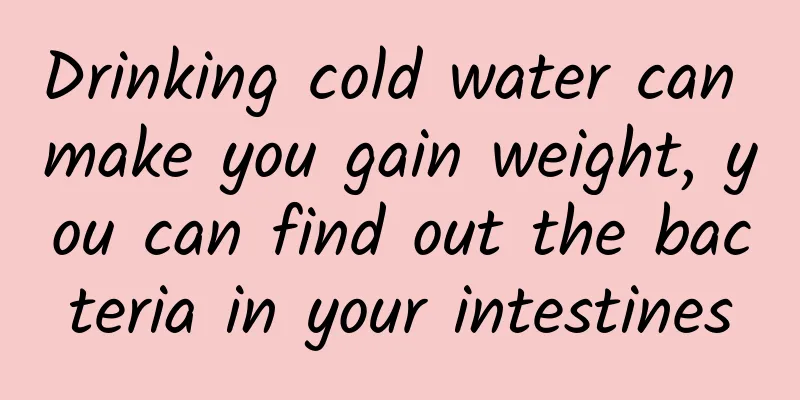The most common causes of breast swelling

|
Breasts are a secondary characteristic of women and develop during their teenage years. For adult women, breast diseases are also very common. When your breasts swell, it may be caused by a breast disease. Of course, some women may also experience breast swelling before their period. So, what are the most common causes of swollen breasts in women? Breast distending pain (distending pain in breast) can be seen in both physiological and pathological situations. Common physiological breast distending pains include: distending pain during puberty, premenstrual pain, pregnancy pain, postpartum pain and pain after artificial abortion, but most physiological breast distending pains are related to emotional tension. If breast pain persists or even becomes more severe, or if you find a lump with irregular shape, unclear edges, and poor mobility when touching your breast, you should go to the hospital for examination and treatment as soon as possible. 1. Pathological (1) Breast hyperplasia: The main cause of the disease is endocrine hormone imbalance. Breast tissue is very sensitive to hormones, and breast tenderness is often the first symptom that patients with breast hyperplasia seek medical attention. Breast hyperplasia may be accompanied by breast lumps, menstrual disorders (delayed, scanty, light-colored menstruation), nipple discharge, emotional changes (bad temper, irritability, mental tension), etc. Therefore, normal breast pain should be distinguished from breast hyperplasia to avoid delaying treatment. (2) Mastitis: Mastitis is divided into lactation mastitis and non-lactation mastitis. Common acute mastitis often occurs in lactating women, especially primiparas. It is an acute breast inflammation caused by bacterial infection during lactation, with typical symptoms of local redness, swelling, heat and pain. Symptoms such as chills, fever, fatigue, and loss of appetite may occur throughout the body. If a breast abscess forms, fluid levels can be seen on ultrasound and pus can be drawn out by puncture. (3) Breast cancer: Breast cancer mostly occurs in women between 40 and 60 years old, and the incidence rate is higher in women before and after menopause. Early breast cancer is often painless, while painful breast cancer often indicates advanced stage. Studies have shown that the detection rate of breast cancer will increase in postmenopausal women who experience breast pain accompanied by gland thickening. Of course, when the tumor is accompanied by inflammation, there may also be swelling or tenderness. If the advanced tumor invades the nerves or the axillary lymph nodes compress or invade the brachial plexus, shoulder pain may occur. Breast cancer is also accompanied by breast lumps, nipple discharge, nipple changes, skin changes, and swollen axillary lymph nodes. 2. Physiological (1) Breast pain during adolescence: During adolescence, breast development begins with nipple swelling, followed by the appearance of pea- to bean-sized dome-shaped nodules in the breast tissue under the nipple, which are slightly painful. After menarche, it will disappear on its own as the breasts mature. (2) Premenstrual breast pain: More than half of women experience breast fullness, hardness, and tenderness before menstruation. In severe cases, the breasts may become swollen and painful even with the slightest vibration or collision, and the original granular or nodular feeling may become more obvious. Generally, the pain is relieved after menstruation. (3) Breast tenderness and pain during pregnancy: Some women experience breast tenderness and pain around 40 days after becoming pregnant due to breast hyperplasia and enlarged breasts. In severe cases, the pain may last throughout the pregnancy. (4) Postpartum breast pain: Breast fullness, hardness, and pain may often occur 3 to 7 days after delivery. (5) Breast tenderness after induced abortion: After induced abortion, some women complain of breast tenderness and may feel a lump. (6) Breast tenderness and pain after sexual intercourse: Breast congestion and swelling are not easy to subside, or subside incompletely, resulting in breast tenderness and pain. |
<<: Breast hyperplasia is a bit painful, what should I do?
>>: What to do if your labia majora grows
Recommend
Why does a woman's white skin turn darker?
Nowadays, popular boys are tall, rich and handsom...
What is the impact of anemia in pregnant women on childbirth?
When the fetus is in the mother's womb, it gr...
Will the words on Kiehl's cream fall off? Does Kiehl's cream have no smell?
Kiehl's facial cream is a product with a good...
How many days does early pregnancy bleeding usually last?
Early pregnancy bleeding is a normal phenomenon. ...
How much do you know about the correct techniques for breast massage for pregnant women?
Under normal circumstances, human breasts are sof...
What are the six sex hormones?
As a basic examination item, the six-item sex hor...
What is the reason for purple menstruation
Menstrual blood is dark purple, which is not a bi...
What should women do when they suffer from insomnia during menopause?
Our lives are very stressful nowadays, and everyo...
Are your eyes red and itchy during the peak season of spring pollen? Beware of allergic conjunctivitis!
Do your eyes turn red and tear up when the spring...
My aunt is very dark, what's wrong?
In addition to observing whether each menstrual p...
How long does it take to eat papaya to enlarge breasts?
Papaya is a very beneficial food for women. In ad...
If you still enjoy your period like this, be careful that the membrane will be dislocated
Many young couples are newlyweds and have strong ...
7 Tips to Become a Highly Emotionally Intelligent Woman
A woman's high emotional intelligence is refl...
What are the reasons why women do not have their periods?
Menstruation is something that women need to expe...
China Anesthesia Week | Why are you not allowed to eat before surgery? Can you drink water?
March 27 to April 2, 2023 is the 7th China Anesth...









